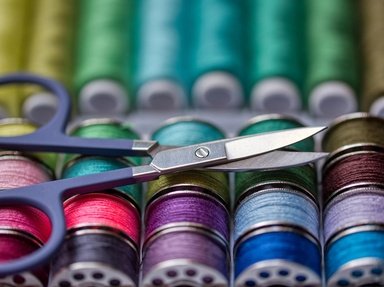Quiz Answer Key and Fun Facts
1. You may have heard of flaxseed, a health food supposedly good to sprinkle on your cereal. What cloth comes from the same plant? I wouldn't suggest grinding up your grandmother's handkerchiefs to put on your cereal, though.
2. Doormats are one of the few things that can be woven from tough, bristly coir fibers. You may think I'm coocoo or nuts to start with such a difficult and obscure fiber so soon, but what does coir come from?
3. What well-known fiber is made into men's suits that look free of dust and wrinkles, or made into winter coats, scarves, socks, and anytime you need a cloth that is still warm when damp? It's also used for blankets and afghans. It takes natural dye well, so was appreciated in the past when dyes were limited, and its main limitation today is its cost and heaviness for winter clothing. It comes from an animal.
4. Mohair is a hard-wearing fiber with all the good qualities of wool, but more so. It takes dye even better, is more crease resistent, it lasts longer - you get the idea. What animal does it come from? Don't let my choice of the "mo" get your goat.
5. This fiber grows in warm climates and, until the introduction of modern machinery, required a lot of hand labor to pick its bolls. That created one of the greatest tragedies for a race of people in North America in modern times. What is this fiber, that used to be king?
6. This luxurious, lustrous fabric, that ripples and flows when the wearer moves, and takes dyes wonderfully, is made by a bug. What bug?
7. What native plant did Native American weavers take fibers from, thousands of years ago, according to archaeological finds? If I had to wear sandals made from this stiff, tough fiber, I'd say "yuck."
8. What animal that looks like a small llama is raised for its fleece in South America, Australia and other places that support similar grazing animals? Its name sounds like it could be a pack animal, but it's actually too small.
9. What fiber plant, also grown to make a common drug, was once woven into ship's sails, heavy bags, and sturdy cloth, as well as made into rope?
10. What stinging plant loses its sting and behaves like linen when properly treated, and has been used by native people for fiber where it grows around the world?
Source: Author
littlepup
This quiz was reviewed by FunTrivia editor
WesleyCrusher before going online.
Any errors found in FunTrivia content are routinely corrected through our feedback system.

